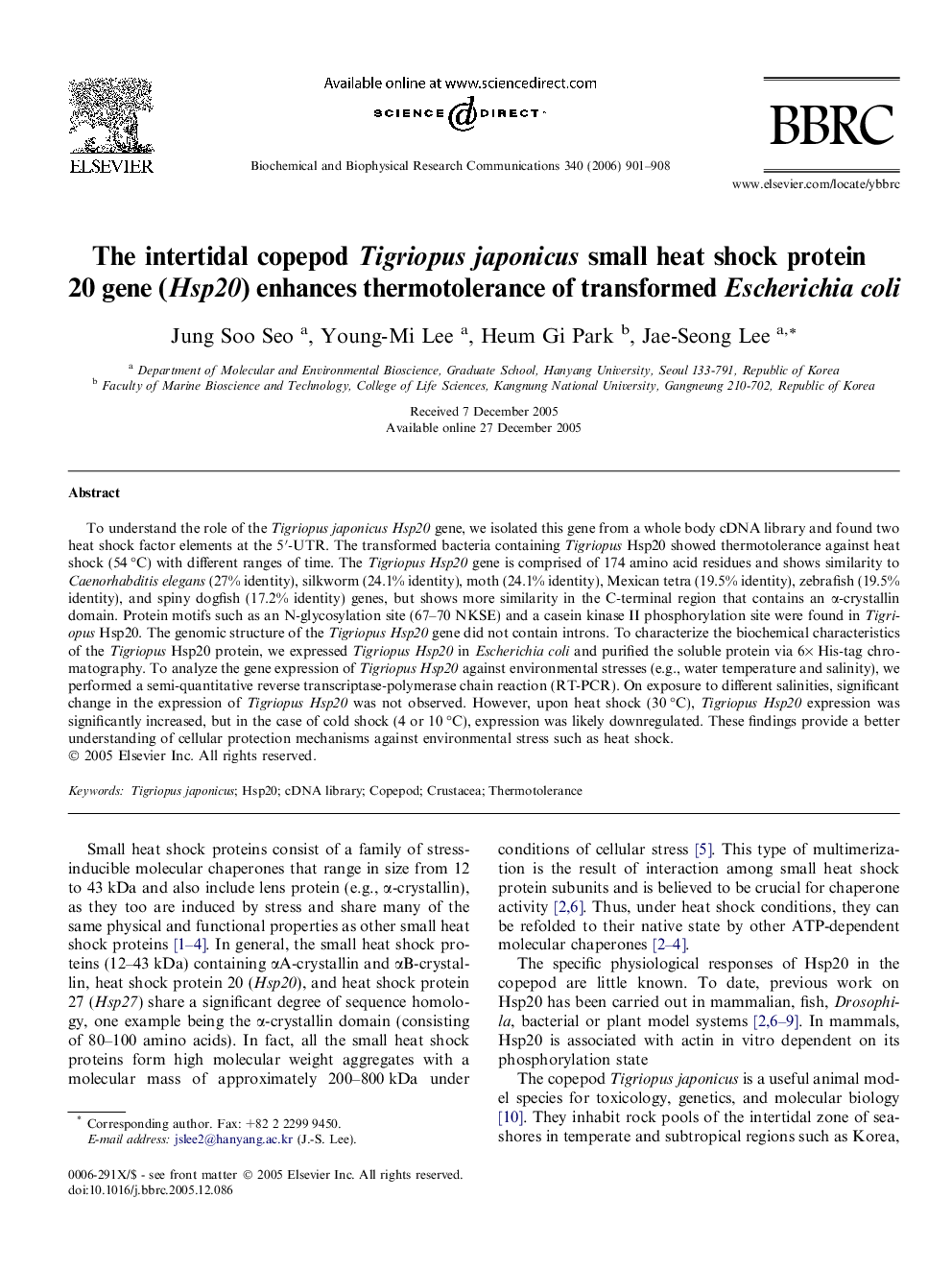| کد مقاله | کد نشریه | سال انتشار | مقاله انگلیسی | نسخه تمام متن |
|---|---|---|---|---|
| 1940548 | 1050783 | 2006 | 8 صفحه PDF | دانلود رایگان |

To understand the role of the Tigriopus japonicus Hsp20 gene, we isolated this gene from a whole body cDNA library and found two heat shock factor elements at the 5′-UTR. The transformed bacteria containing Tigriopus Hsp20 showed thermotolerance against heat shock (54 °C) with different ranges of time. The Tigriopus Hsp20 gene is comprised of 174 amino acid residues and shows similarity to Caenorhabditis elegans (27% identity), silkworm (24.1% identity), moth (24.1% identity), Mexican tetra (19.5% identity), zebrafish (19.5% identity), and spiny dogfish (17.2% identity) genes, but shows more similarity in the C-terminal region that contains an α-crystallin domain. Protein motifs such as an N-glycosylation site (67–70 NKSE) and a casein kinase II phosphorylation site were found in Tigriopus Hsp20. The genomic structure of the Tigriopus Hsp20 gene did not contain introns. To characterize the biochemical characteristics of the Tigriopus Hsp20 protein, we expressed Tigriopus Hsp20 in Escherichia coli and purified the soluble protein via 6× His-tag chromatography. To analyze the gene expression of Tigriopus Hsp20 against environmental stresses (e.g., water temperature and salinity), we performed a semi-quantitative reverse transcriptase-polymerase chain reaction (RT-PCR). On exposure to different salinities, significant change in the expression of Tigriopus Hsp20 was not observed. However, upon heat shock (30 °C), Tigriopus Hsp20 expression was significantly increased, but in the case of cold shock (4 or 10 °C), expression was likely downregulated. These findings provide a better understanding of cellular protection mechanisms against environmental stress such as heat shock.
Journal: Biochemical and Biophysical Research Communications - Volume 340, Issue 3, 17 February 2006, Pages 901–908